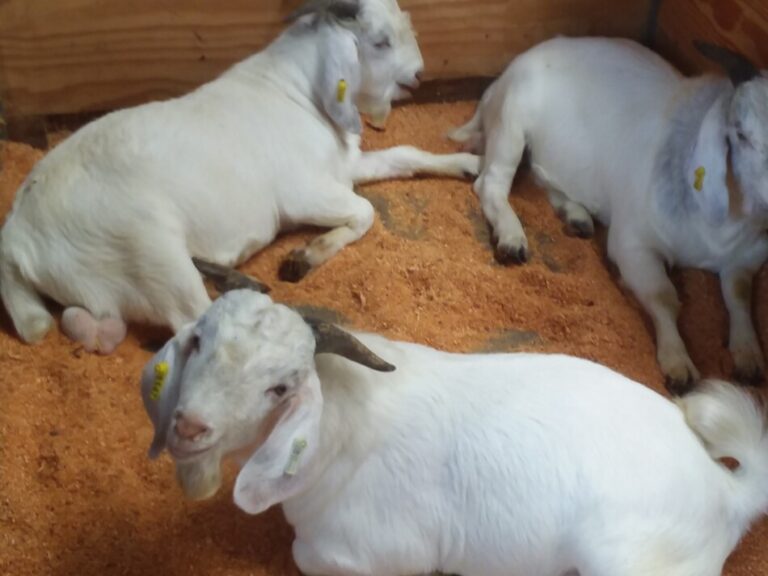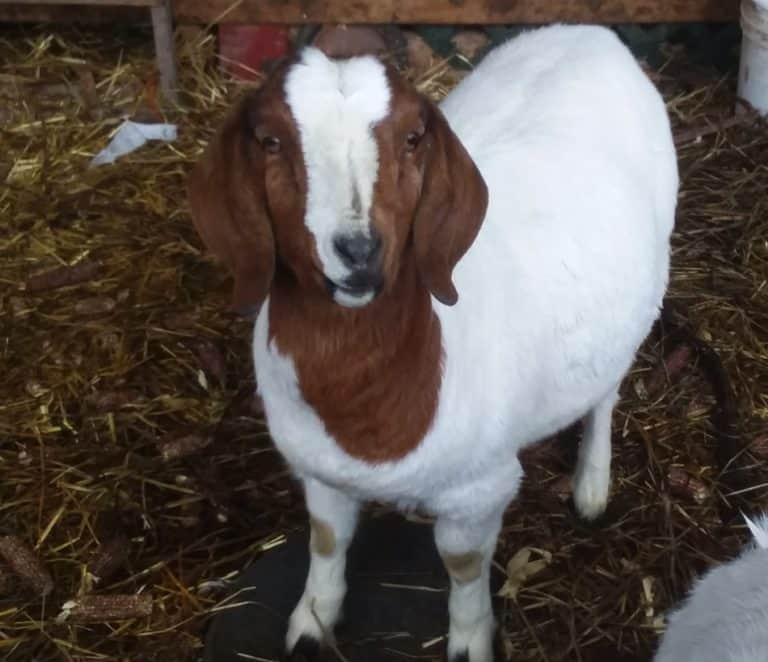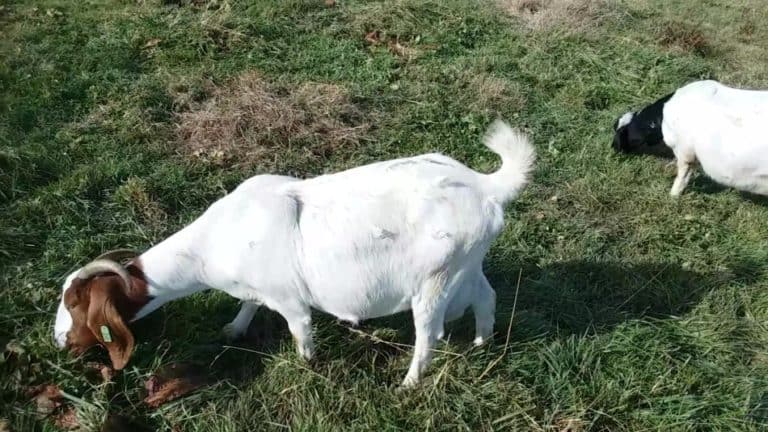Raising Goats: Can A Goat Eat Too Much Hay?
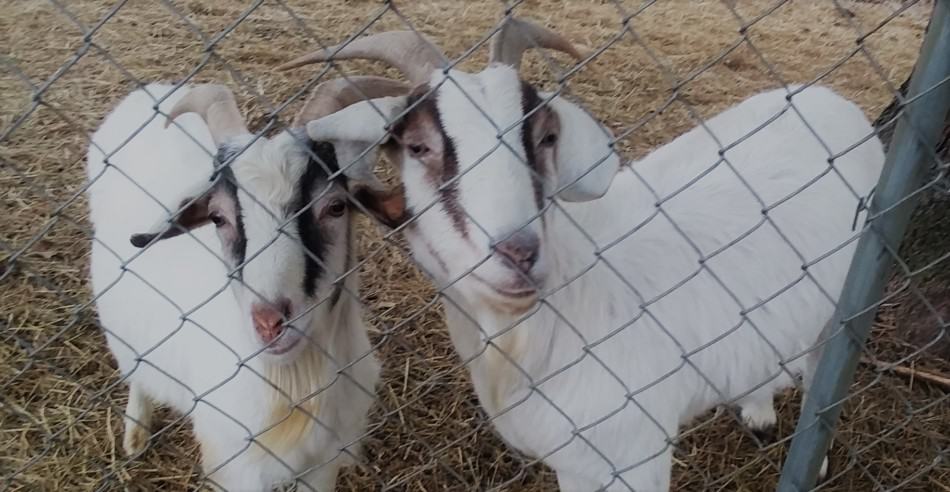
Feeding your goats can be confusing! How much hay should you be feeding your goats?
Can they eat all they want or is there a healthy limit? The answers depend upon your goat!
A goat can not eat too much hay. Given the choice, a goat will eat what it needs.
Being new to goats, you’ll undoubtedly come across tons of information regarding feeding goats, but what it the right way for your goats?
Don’t have any goats yet? Read my article Buying Your First Goats.
Let me make it clear: High quality hay or browse, depending upon the season, is the foundation of your goat’s diet!
All goats should have hay or other forages included in their daily ration. How much hay they should eat depends upon the goat and the type of hay.
Before we get into this too far, there are a few things that can trip you up regarding your goats eating too much hay: 1. show goats and 2. nutritional value of your goat’s ration (all of the food it eats).
- For show goats: for this article, I’m speaking of commercial goats, not show goats. For a show goat, a big hay belly is not going to earn you a top placing! So, if you are interested in showing goats, you need to look elsewhere for your information!
- Eating all of her hay does not mean your goat is getting the nutrition she needs! Being full and fully nourished are two different things! Be sure you are giving your goats good hay, not just hay! Quality counts!
So, with the exception of show goats, your goat can have as much high quality hay or browse as she wants. How much she needs and if she can eat only hay is covered next.
Want a feeding budget for your goats? Read my article Costs To Keep And Raise Goats.
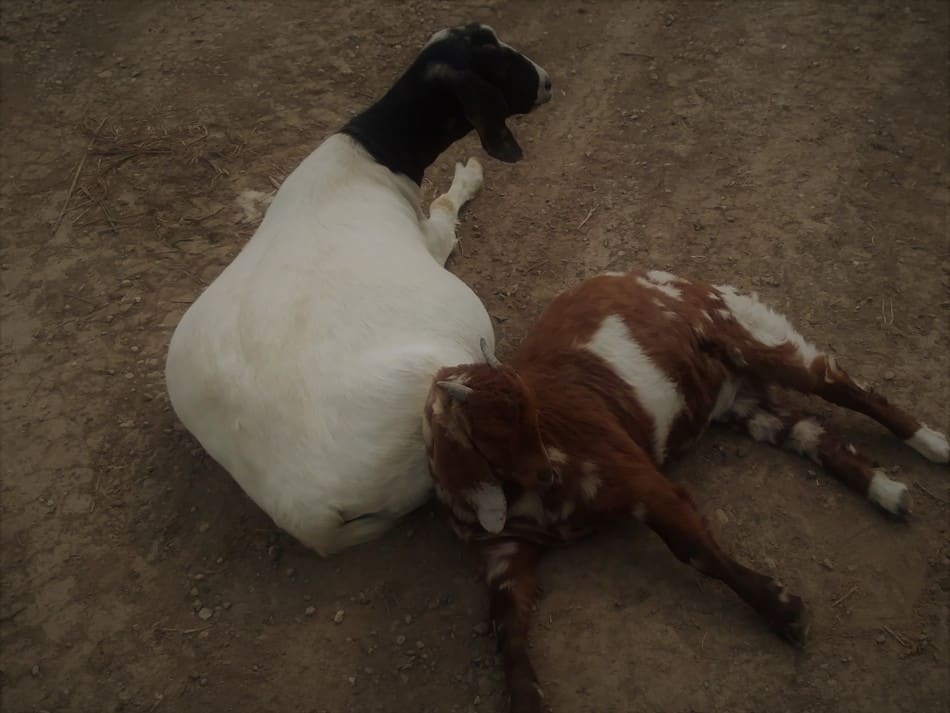
Your goat will eat 3.5% of her weight in hay per day
You should let your goat eat all of the hay she wants to eat, she knows the right amount. If you are a numbers person, go with 3.5% of her body weight as a starting point and adjust from there based on observation.
What’s the big deal with hay and goats? Hay has the long fibers that are critical for her digestion.
Goats are ruminants, like sheep and cattle, so they need longer fibers to have their digestive system working appropriately.
The need for hay is especially critical if your goats are being fed any concentrates, grains or pelleted.
The hay will balance out the the higher energy feeds so her gut can function optimally. Your goat will balance out her own hay needs, if you let her by giving her free choice hay!
Raising Goats: Herd Care gives you an idea of your basic management needed for your new herd.
Your goat can live off of good hay
Technically, yes. In reality, this is a simplistic answer, since you need to take into consideration the quality of the hay.
Can your goat live off just high quality hay (no grain)? Maybe.
Yes, if the hay is of high quality and more than meets her daily caloric needs, meaning it depends upon the goats you have.
If the hay is of poor quality, no, it’s not suitable for your goats (no matter what type of goats you have)!
The lighter framed goats and the slower growing goats are more likely to be able to eat only hay and do well, think Kiki or Spanish type goats.
The larger bodied goats, like Boers, and fast growing goats, like young kids, needs more than hay to grow well.
How to tell if your goat needs better hay
How can you tell if your goat needs more than just hay? Look at the goat! Is the goat spunky, tail up and curious with a nice sleek hair coat? If so, she’s doing well!
If her hair is rough and she doesn’t have much zip, you need to adjust her ration. Get her different hay or consider giving her some concentrates.
Some goats need more than hay
Any high energy needs goat, like lactating does, growing kids and heavier built “meat type” goats, will need more to eat than just hay.
These goats are going to need supplemental energy, probably in the form of grain, to grow or produce at an optimal rate.
Without grain these goats are not going to be able to get the daily calories they need to be healthy.
If you don’t want to supplement the hay with grain, get a lighter built goat that doesn’t need the extra calories, like Kiko or Spanish.
These type of goats can forage for themselves, without the additional calories required by other breeds of goats.
They still need a high quality diet of hay or browse, but normally do not require grain supplementation.
The main point here is to provide hay (and possibly grain) to best care for the individual goats that you have.
Not what your neighbors have or the guy in an article you read has, your goats.
Goat breeds vary quite a bit, so it only makes sense that the needs and appropriate feeding program of those goats will vary quite a bit, as well.
No worries, with a bit of observation, you’ll soon be able to see if your current hay is working for your goats or if you need to change.
Here’s a great chart explaining the different feeding needs of goats. Keep in mind the company that made the chart sells feed (so they think all goats needs to be getting some of the feed they make!), none the less, it’s a useful chart.
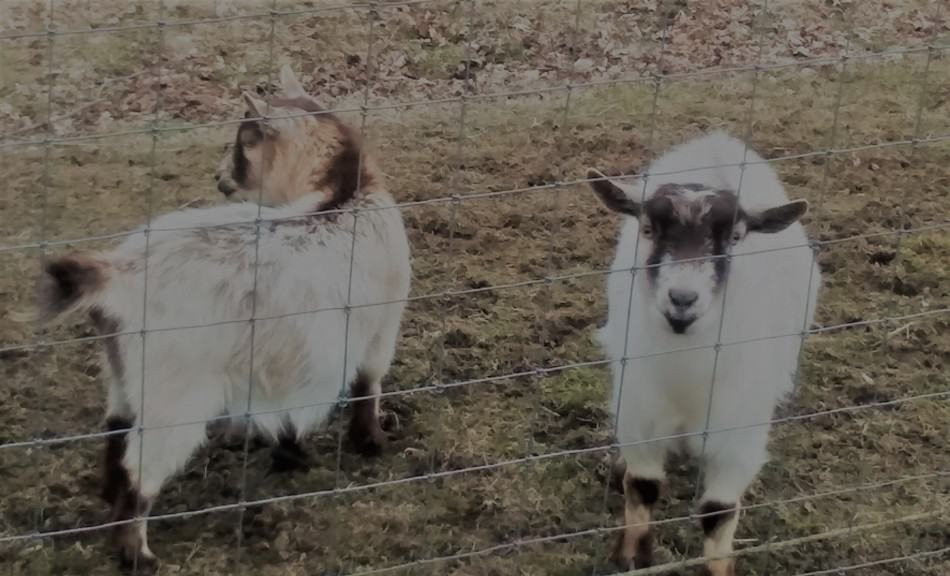
2nd or 3rd cutting of hay is best for goats
Second or third cutting hay are generally of higher quality than a first cutting hay. This is figuring on high quality, made in a timely fashion hay crops.
Any cutting made well is better than a later cutting made poorly. for example a great first cutting will be of higher quality than a second cutting that got rained on multiple times before it could be baled.
Well made first cutting hay can be super for your goats! Or it can be late made, rained on junk that really is only good for mulch or bedding!
Don’t get hung up on the cutting, it’s the quality that counts!
1st Or 2nd Cutting Hay? shows you the specific differences so you can tell, for yourself, the cutting of the hay you are buying.
How to tell if your goats like the new hay
If you are not sure how your goats will like a new hay, just get a few bales to start with as a test. Do they eat the new hay readily? How much waste, like stems, are left in the feeder?
If the new hay works well for you, then get more! We always get very frustrated when we buy a load of hay that turns out to not be what the seller promised or my animals just don’t like it!
Start with a few bales and get a larger amount once you see if your goats like it or not.
Start with a nice second cutting grass hay
A safe place to start would be a nice second cutting grass hay or a mixed hay of alfalfa and grass. Nothing stemmy or with mature seed heads on it.
The plants should be barely starting to flower to be a peak nutrition. If you see mature seed heads, it was made late and is lower in feeding value than a hay made at peak nutrition.
Still unsure about what hay to buy for your goats? Ask around.
Ask the people at the local farm store or join an online group and ask advice of fellow goat raisers or other livestock producers in your area. They’ll know the scoop.
Don’t forget to check online ads, as well!
A word to the wise: if possible, buy hay from people with livestock. They will have made the best hay possible for their own animals and are selling the extra.
In our experience, people that only raise hay to sell, not feed it as well, make poorer hay than someone with livestock does.
A bale of hay will last 10 days for one goat
The quick answer is around 10 days. The specific answer involves a bit of math.
This depends upon how much your goat weighs and how much the bale weighs. Generally speaking your goat should be getting 3-4% of her body weight in hay per day, let’s use 3.5%.
We’ll say that the goat in question weighs 130 pounds, just to give an example of how to figure out the amount of hay per goat per day.
130 pounds x .035= 4.55 pounds of hay per day
For easy math if you have a 45 pound bale you will have enough hay for your goat for about 10 days per bale.
Most small square bales will weigh between 40-50 pounds each. You’ll have to individually weigh at least one of yours to get a more specific weight if you need it.
Another option is to take a flake of hay, the sections of hay that the bale will easily fall apart into when you cut the twine, and weigh a few of those.
Don’t get too hung up on this, once you get going for a few weeks you’ll develop an eye for how much hay your goat needs and be able to guess just by looking.
Feed alfalfa to high energy need goats
If your goat has a really high energy need, sure, feed alfalfa! Goats that I am thinking of are milking does and growing kids.
Non growing goats, ones on a maintenance ration, do not need such a high energy feed. I’m sure they would like some, but they don’t need it!
Maintenance goats, like pets or early gestation does, do not need as much energy as lactating does or fast growing market kids.
Since a higher energy hay, like alfalfa is generally more expensive than a lower energy hay, it will save you money to give the alfalfa to the goats who need it.
Is timothy or alfalfa hay best?
Feeding timothy or alfalfa depends upon what you are feeding for: growth, milk or maintenance?
A maintenance goat will do great on timothy and it will be a great long fiber for a higher maintenance goat that is also getting some concentrates.
Alfalfa is perfect for growing kids and lactating does, since it is so high quality and palatable.
Providing more than one type of hay
Another thing to consider is giving your goats some of each type of hay.
For example: give a pet goat primarily grass hay, like timothy, and supplement with alfalfa as more of a snack.
You could give the main feeding of timothy in the morning and give the bonus dessert type flake of alfalfa at night, once they’ve spent the day eating the timothy hay.
If you give the alfalfa first, they’ll ignore the timothy or drag it out of the feeder searching for the last bits of alfalfa!
Tips To Choose High Quality Hay is an article I wrote to give you specifics of what to check to see if you are getting your money’s worth!
